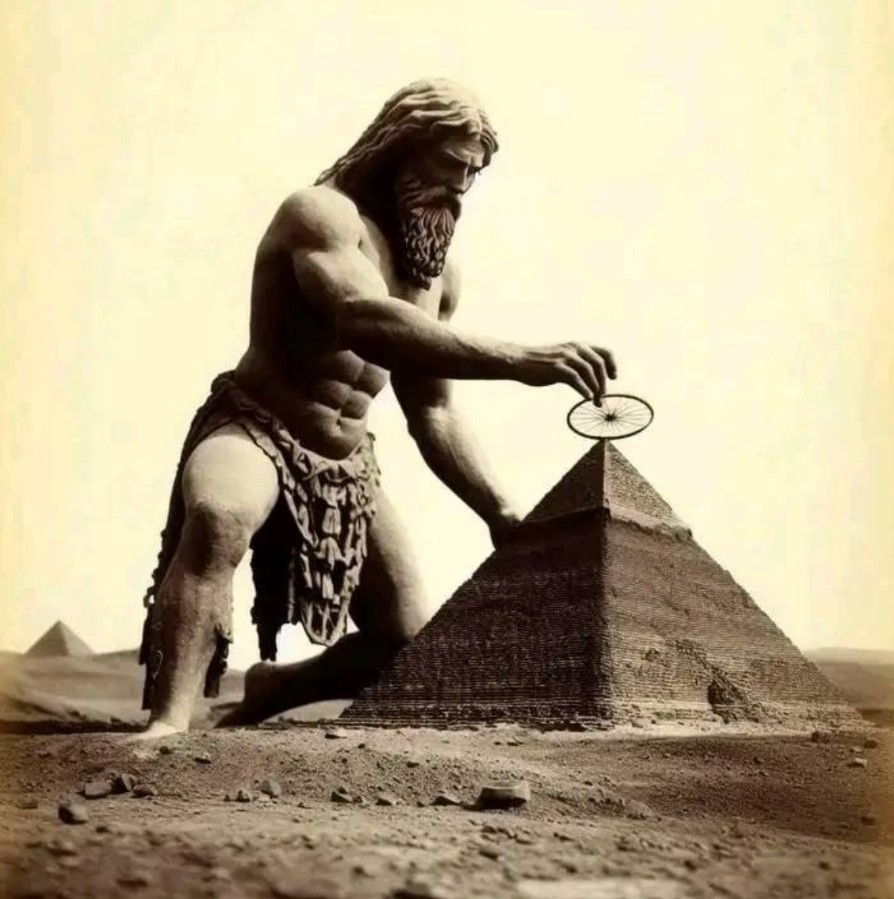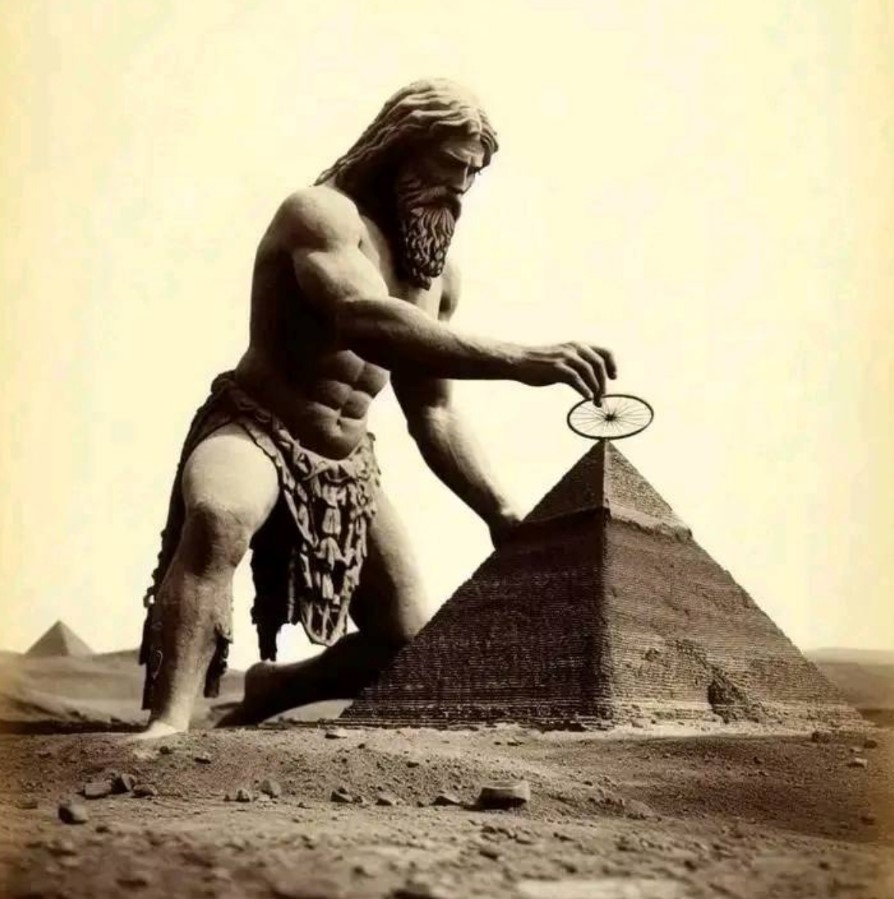The ancient pyramids of Egypt stand as awe-inspiring monuments to human ingenuity and engineering prowess. Rising majestically from the desert sands, these colossal structures have captured the imagination of scholars, historians, and conspiracy theorists alike for centuries. While mainstream archaeology attributes their construction to skilled laborers and meticulous planning, alternative theories suggest a more enigmatic origin, involving giants or even extraterrestrial beings. In this exploration, we delve into the age-old question: Did giants or aliens play a role in building Egypt’s pyramids?

**The Traditional View: Human Ingenuity and Labor**
According to mainstream archaeological consensus, the pyramids of Egypt were constructed during the Old Kingdom period, between 2580 and 2560 BCE, as monumental tombs for pharaohs and rulers. The most famous among them, the Great Pyramid of Giza, was built for Pharaoh Khufu and is estimated to have required the labor of tens of thousands of skilled workers over a period of 20 years.
Proponents of the traditional view argue that the pyramids’ construction can be explained by human ingenuity, advanced engineering techniques, and the organization of labor under centralized authority. Evidence such as quarry marks, workmen’s graffiti, and archaeological finds at pyramid construction sites support the theory that skilled artisans and laborers, rather than giants or aliens, were responsible for building these ancient marvels.
**The Alternative Theories: Giants and Extraterrestrials**
Despite the prevailing consensus among mainstream scholars, alternative theories proposing supernatural or extraterrestrial involvement in pyramid construction have gained traction among certain fringe groups and conspiracy theorists.
One such theory suggests that giants, beings of immense stature and strength, were responsible for lifting and placing the massive stone blocks that make up the pyramids. Proponents of this view point to ancient texts and myths from various cultures that mention giants and their feats of construction, suggesting that these beings may have collaborated with ancient civilizations to build monumental structures like the pyramids.
Another theory posits that extraterrestrial visitors, possessing advanced technology far beyond that of ancient humans, played a role in building the pyramids. According to this view, aliens provided the knowledge, tools, and assistance necessary to construct the pyramids with precision and efficiency. Supporters of the ancient aliens hypothesis point to purported evidence such as anomalous architectural features, mysterious hieroglyphs, and alleged encounters with UFOs in ancient artwork.
**The Skeptical Perspective: Critical Examination and Evaluation**
While alternative theories regarding the construction of Egypt’s pyramids may capture the imagination, they are not without their critics. Skeptics argue that such theories lack credible evidence and rely heavily on speculation, conjecture, and misinterpretation of ancient texts and artifacts.
The traditional view, supported by archaeological evidence and scholarly consensus, maintains that the pyramids were built by human hands using conventional construction techniques and labor-intensive methods. While the scale and precision of the pyramids’ construction may seem remarkable, they are not beyond the capabilities of ancient civilizations given sufficient time, resources, and organizational skills.
The question of whether giants or aliens played a role in building Egypt’s pyramids remains a subject of debate and speculation. While mainstream archaeology favors explanations rooted in human ingenuity and labor, alternative theories continue to capture the imagination of those who seek to unravel the mysteries of the ancient world.
Whether viewed as monuments to human achievement or enigmatic symbols of cosmic intervention, the pyramids of Egypt continue to inspire wonder and fascination, inviting us to contemplate the secrets of the distant past and the enduring legacy of one of civilization’s greatest architectural achievements.



